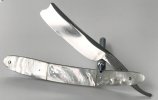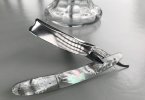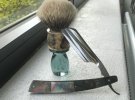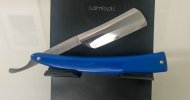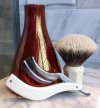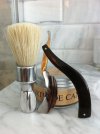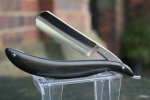- Messages
- 71
I am currently having a look at the various straight razor manufacturer sites and many, if not most, offer a large variety of scales.
To resume they all appeart fall into one of the following categories
1 : Synthetic ( Plastic, polymers etc)
I would presume that these are easily the most durable.
2 : Wood ( varying hard or reasonably hard woods)
Water and wood don't usually mix very well which worries me a little. Probably requires a faire amount of attention in order to avoid scratches, chips etc
3 : Bone ( I consider bone and horn to be in the same category)
I would imagine that these are pretty solid due to their inherent hardness and waterproofness.
4 : Metal ( this seem quite rare).
I would not choose metal scales, neither the aesthetics or tactileness appel to me..
Is there any particular reason for choosing one over the other, other than for aesthetic reasons ? What would be the Pros and Cons on anything that I have not imagined.. Are there any inherent hardware problems, with pivots or axes with the above material groups. Obviously price has a major influence but that is quite obvious due to rarityor diffulty in manufacturing.. ( Surpising that I haven't seenm titanium scales though due to the weight savings)
Cheers
To resume they all appeart fall into one of the following categories
1 : Synthetic ( Plastic, polymers etc)
I would presume that these are easily the most durable.
2 : Wood ( varying hard or reasonably hard woods)
Water and wood don't usually mix very well which worries me a little. Probably requires a faire amount of attention in order to avoid scratches, chips etc
3 : Bone ( I consider bone and horn to be in the same category)
I would imagine that these are pretty solid due to their inherent hardness and waterproofness.
4 : Metal ( this seem quite rare).
I would not choose metal scales, neither the aesthetics or tactileness appel to me..
Is there any particular reason for choosing one over the other, other than for aesthetic reasons ? What would be the Pros and Cons on anything that I have not imagined.. Are there any inherent hardware problems, with pivots or axes with the above material groups. Obviously price has a major influence but that is quite obvious due to rarityor diffulty in manufacturing.. ( Surpising that I haven't seenm titanium scales though due to the weight savings)
Cheers

